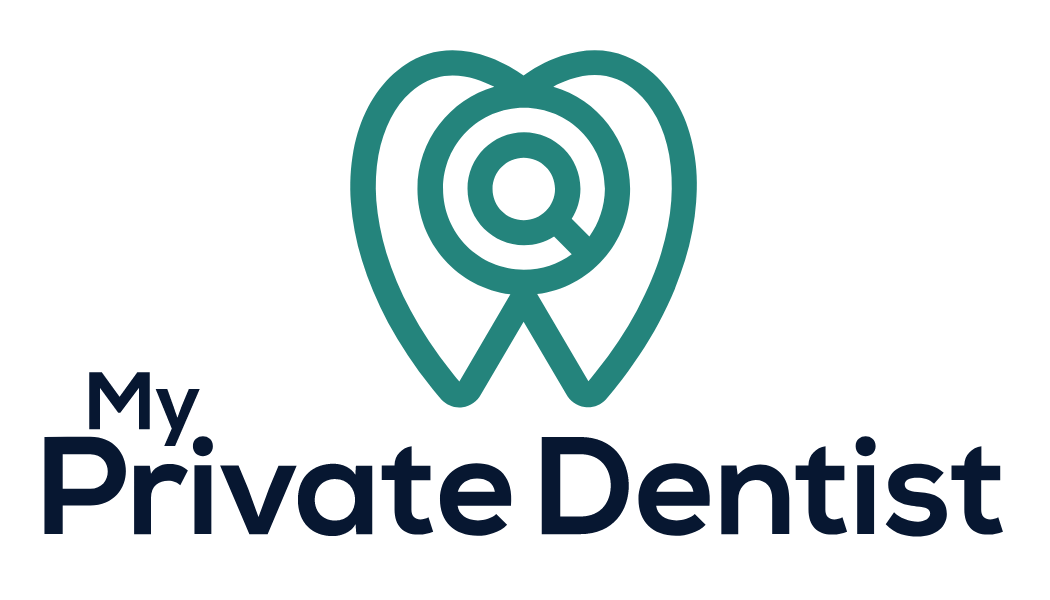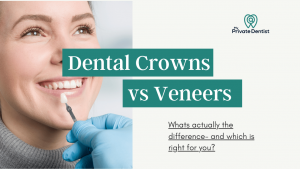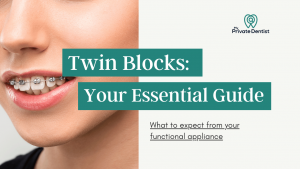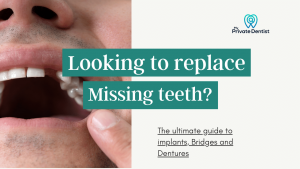These are my recommendations for the best baby toothbrush.
As a dentist and a parent, I see the positive impact of taking care of a baby’s teeth from an early age. Baby teeth may be temporary, but they play a crucial role in a child’s development, including speech, chewing, and the alignment of permanent teeth.
That’s why finding the right toothbrush for your little one is essential. In this round-up review, I will be sharing my top picks for baby toothbrushes based on my personal experience and professional expertise.
I recommend the MAM Learn to Two Brush Set as it includes a safety shield to prevent gagging, a toothpaste indicator, and brushes that grow with your child. The longer handle of the first brush allows parents to help their baby, while the shorter handle of the second brush encourages independent brushing.
There are many things to look out for when selecting a toothbrush for children, including the size of the head, types of bristles, and handle design. These factors can make a significant difference on the effectiveness of cleaning, and how quickly children can learn to brush on their own.
There are also a few features which can make the process more fun and enjoyable.
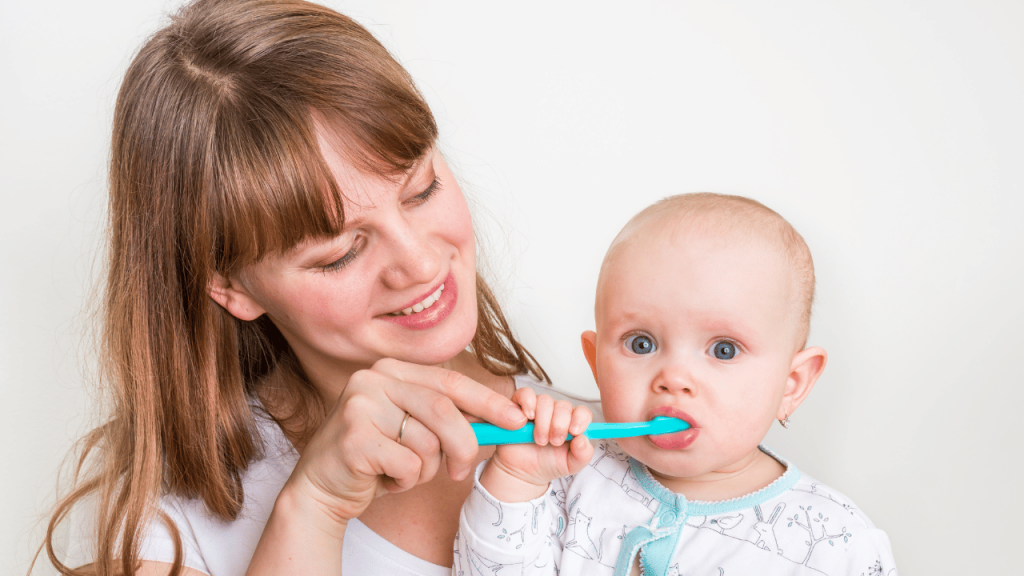
Whether you’re a first-time parent or a seasoned pro, we hope this guide will help you find the best baby toothbrush for your needs and keep your baby’s teeth healthy and strong.
Read on to see what’s out there…
Our Top Picks
Best Overall Baby Toothbrush – MAM Learn to Brush Set
Best Toothbrush for Teething Baby – Brush-Baby Chewable Toothbrush and Teether
Best Electric Baby Toothbrush – Brush Baby Babysonic
Best Baby Finger Toothbrush – FridaBaby Baby’s First Toothbrush with Case
Best Toothbrush for Babies to Handle – Grabease Double Sided Toothbrush
Best Training Baby Toothbrush – LoveNoobs Training Baby Toothbrush
Best Baby Toothbrush Sets – Cherish Baby Toothbrush 0-2 Years
Best Toothbrush for Toddlers – Dr. Brown’s Giraffe Infant Toothbrush
Best Eco Baby Toothbrush – Wild and Stone Eco Bamboo 4 pack
Best Budget Baby Toothbrush – Colgate Kids Toothbrush 0-3 Years
How we choose the toothbrushes we recommend
As parents and dentists, we understand the importance of establishing good oral hygiene habits from a young age. Choosing the right toothbrush for your baby can be overwhelming, with so many options available on the market. That’s why we’ve done the research and hands-on testing to bring you our top picks for the best toothbrushes for babies.
Our recommendations are based on our professional experience as dentists, as well as our personal experience as parents. We’ve seen first hand what works and what doesn’t when it comes to cleaning baby teeth.
We’ve also tested each of the toothbrushes on our own children to see how durable they are and how enjoyable they are for babies to use.
In addition to our own experience, we’ve scoured the internet for reviews and feedback from other parents to ensure that our recommendations are widely trusted and reliable. We believe that the toothbrushes we’ve chosen are the best options for parents looking to establish good oral hygiene habits for their babies.
Best Overall Baby Toothbrush
MAM Learn to Brush Set
Why we recommend this baby toothbrush:
We chose the MAM Learn to brush set as the overall best for your baby because it provides all the benefits you’ll need.
The safety shield prevents your baby from putting the brush too far into their mouth to prevent them gagging, and causing damage to the back of their little mouths.
The toothpaste indicator is ingenious. We often see that too much toothpaste is placed on the brushes for kids of all ages, so the red bristles show clearly the amount of toothpaste that needs to be applied. Too much toothpaste can lead to higher levels of fluoride ingestion.
Finally, the set grows with your child. The first brush has a longer hand so that parents can help their baby to brush, while the second has a shorter handle which encourages them to develop the dexterity they need to brush independently.
Pros
Grows with your child’s needs
Soft Bristles, round head
Cons
Cost
Best Toothbrush for Teething Baby
Brush-Baby Chewable Toothbrush and Teether
Why we recommend this baby toothbrush:
Babies are often teething and have fully erupted teeth at the same time. The shape of this teether brush is ideal to help them bite to provide relief for their erupting back teeth, as well as clean their front ones.
For babies who don’t like having their teeth brushed, this product is more reminiscent of a teether, but also has bristles which will gently clean away plaque and bacteria from their teeth.
The rubber bristles are longer lasting than soft fibre ones for children who love biting and chewing their brush.
Pros
Can be cooled in fridge for extra relief from teething
Cons
Does not help teach brushing technique
Best Electric Baby Toothbrush
Brush Baby Babysonic
Why we recommend this baby toothbrush:
Clearly you’re never too young to level up your brushing game. This electric toothbrush for kids is impressive, as it works off a single AA battery, so no need for recharging.The heads can be replaced when worn and come in different sizes so you can have a bigger head as your child grows.
There is also an LED light which shines through the transparent brush head to help parents to see into their children’s mouths and clean effectively.
The sucker on the bottom will help your child to put the brush back where it belongs once they’re finished. It also has a timer to encourage brushing for long enough.
Pros
Battery powered – no charging needed
Grows with your baby through changing heads
Cons
Some babies may not like the vibrations
Best Baby Finger Toothbrush
FridaBaby Baby’s First Toothbrush with Case
Why we recommend this baby toothbrush:
Using a finger brush can be a great way to introduce your baby to an oral hygiene regime. This bright brush has rubber bristles in a special formation to wrap around each tooth and also helps to keep toothpaste in place.
The structure of this finger brush is also thicker and stiffer than other cheaper options to protect your fingers if your baby were to bite down. The rubber bristles are sturdy and should be long lasting.
Helping your baby with a finger brush can clean their teeth effectively, and also be great for bonding.
Pros
Easily sterilised
Fast effective cleaning
Cons
Cost (but worth the upgrade)
Best Toothbrush for Babies to Handle
Grabease Double Sided Toothbrush
Why we recommend this baby toothbrush:
I was impressed at the thought that had gone into the design of this brush. It’s extremely robust and easy to use for children. The flower handle design for preventing gagging will help parents feel more confident about babies using the brush independently.
If your child is impatient when it comes to brushing, the bristles on opposite sides can help clean upper and lower teeth simultaneously.
It also comes in a great range of colours, and won’t need replacing as much as some of the other brushes we tested.
The bristles are quite long and the firm grip handle could encourage brushing too hard, so supervision is necessary.
Pros
Well designed
Sturdy
Cons
Free finger brush is flimsy
Might be too big for <12m
Best Training Baby Toothbrush
LoveNoobs Training Baby Toothbrush
Why we recommend this baby toothbrush:
This brush has rubber bristles which go all the way around the head to help clean the teeth no matter which way the child is holding the brush. It can be used for first teeth and as a teether.
With the apple handle design being wide it also protects the baby from pushing the brush too far into their mouths.
It is durable and made from BPA-free, food grade silicone and can be sterilised with teethers and bottles.
Pros
Great design
Easy to hold for babies
Cons
Hard for parents to help
Can’t really apply toothpaste
Best Baby Toothbrush Sets
Cherish Baby Toothbrush 0-2 Years Set of 3
Why we recommend this baby toothbrush:
Finger brushes are a great way to get started for a baby, a double sided large brush is then a good way of then cleaning independently, and then finally a toddler brush once they’re ready. All three in one set and your ‘set’ for a while.
Good value for money, with both brushes sturdy and durable. Small head on ‘first’ toothbrush ideal for training, and can be used as a tongue cleaner.
They also have safety shields but not quite as wide as other brushes on the list. The brushes can be used with toothpaste or teething gel.
Pros
Already have a brush for when they’re ready to move up a stage
Cons
Finger brush not as robust as others
Plain design
Best Toothbrush for Toddlers
Dr. Brown’s Giraffe Infant Toothbrush
Why we recommend this baby toothbrush:
Dr Brown has a wide range of good quality baby products and its offering for a baby toothbrush is no exception. Disguised as a toy, it’s a great transition from teether to brush.
Its extra soft bristles are great for removing plaque from teeth gently without risk of trauma to gums.
The giraffe’s body works great as a soft grip handle, and is BPA free.
Pros
Stands up which is better for hygiene
Cons
Brush head could be smaller
No safety shield
Best Eco Baby Toothbrush
Wild and Stone Eco Bamboo 4 pack
Key Features
Bamboo
Biodegradable
Why we recommend this baby toothbrush:
We can’t get away from the fact that most plastic toothbrushes end up in landfill as they are not reusable. When you consider how many brushes your child may go though, this can soon add up.
This value 4 pack of bamboo brushes has great green credentials as the material for the handle is sourced sustainably from fast growing bamboo.
Soft bristled heads are comfortable, although not as durable as rubber bristles.
Pros
Good for the environment
Cons
Could possibly split with excess chewing
Best Budget Baby Toothbrush
Colgate Kids Toothbrush 0-3 Years
Key Features
Cheaper than alternatives
Traditional design
Small head
Why we recommend this baby toothbrush:
Colgate is a known and trusted brand across the dental industry, and their baby brush is well made and excellent value for money as it is mass produced.
Soft bristles and a small head make it ideal, with a sturdy handle which can help your baby learn the dexterity of brushing.
There’s no safety shield, and not ideal if your baby is teething or chewing the brush.
Pros
Value
Non-slip Handle
Cons
Not eco friendly
Buying Guide: What to look for when buying a toothbrush for your baby
Age/Stage Appropriate
Most babies typically start getting their first teeth around 6-12 months old, but it’s important to start caring for their mouths even earlier than this (1). Specialised baby mouth wipes can help keep their mouths free of germs. These can be used after feeding to clean away any milk residue and introduce them to their first oral hygiene routine.
During the teething phase, you may notice redness and hard swellings on the gum pads. A rubber ring to bite on can help relieve the pain and aid in the eruption of their teeth.
Once the first tooth comes through, it’s time to start brushing! A soft bristled brush with a small head is ideal for cleaning around the teeth.
It’s crucial to maintain good oral hygiene at all ages to prevent sore gums and other dental issues. So, make sure to keep their teeth and gums clean with regular brushing and dental check-ups.
Bristles
It’s best to opt a toothbrush with soft bristles for babies. Stiff bristles can cause damage to their delicate gums and make them sore. In addition to soft fibre bristles, thicker rubber bristles can also be comfortable for babies, and they may enjoy chewing on them during the teething phase.
Head size
Using a normal adult-sized toothbrush for a baby can be uncomfortable and impractical. It’s important to get a toothbrush specifically designed for babies, with a smaller head and soft bristles that are gentle on their gums. You should also make sure that babies have their own toothbrush and are not sharing with a parent or sibling, as this can spread germs and bacteria.
When selecting a baby toothbrush, consider the head design as well. Some toothbrushes have standard and small heads, while others wrap around the tooth. Ideally, the head size should be no more than 1 cm to effectively clean their teeth and gums without causing discomfort.
Toothbrush vs finger brush
Using a toothbrush on a baby can be challenging for parents; using a finger brush can be a great alternative. A finger brush simply slides over your finger, allowing you to clean your baby’s teeth in a more dexterous and controlled way. Additionally, using a finger brush can be a great bonding experience for you and your little one.
When choosing a finger brush, it’s important to opt for a rubber or silicone brush with a good grip to prevent it from coming off while you’re using it. Choosing one made from a thick silicone will protect your finger in case your baby bites down. This ensures that you can clean your baby’s teeth safely and effectively.
Design
It’s also important to consider the handle design for a baby toothbrush. A large, wide rubber grip handle can be ergonomic enough for babies to hold and use themselves, but it ultimately depends on the baby’s age and development. For smaller babies, using a finger brush may be more comfortable and ergonomic for a parent to wear while cleaning their teeth.
Encouraging babies to hold and use their toothbrush can also help improve their hand-eye coordination, their motor skills and build independence.
Manual vs Electric
If deciding between a manual and electric toothbrush for babies, it’s important to consider their age and development. In my opinion, an electric toothbrush for a baby is unnecessary and may even be overwhelming for them. Electric toothbrushes vibrate and require batteries, which may cause discomfort or anxiety for some children.
However, as children get a bit older (around 2 and a half years old or when they have all their baby teeth) it may be a good time to introduce them to an electric toothbrush.
It’s important to note that electric toothbrushes can cause irritation and ulcers to soft tissues if not used properly, so children should be supervised while using them.
Materials
Toothbrushes are not a long-lasting product and typically need to be replaced every three months. However, with children chewing on the brush heads, they may need to be replaced even more frequently. This can result in a significant amount of plastic waste that ends up in landfills, making it an environmentally unfriendly product.
Fortunately, there are alternative materials available that are more eco-friendly, such as brushes with bamboo handles, which are recyclable and biodegradable.
Additionally, eco-friendly brushes can be made with natural fibre bristles and be BPA-Free.
Cost
When it comes to the cost of toothbrushes for babies, it’s important to consider the appropriateness of the toothbrush and the potential for cost savings. While a standard adult toothbrush may be cheaper, it’s not suitable for babies and can cause discomfort or damage to their delicate gums.
Toothbrush sets that cater to babies’ changing dental needs, from no teeth to all baby teeth, can be a cost-effective option. These sets typically include toothbrushes of different sizes and designs that are appropriate for each stage of development. However, the cost can still add up over time, as toothbrushes for babies may need to be replaced every few months.
Electric toothbrushes for babies are more expensive than manual toothbrushes, and it’s not obvious that the added expense is worth it. A teether and toothbrush combo may be a more cost-effective option, as it serves a dual purpose and can be used during the teething phase as well.
Ultimately, the decision between different toothbrush options for babies depends on your budget and your child’s needs. It’s important to choose a toothbrush that is appropriate for their age and development, and to replace it regularly to maintain good oral hygiene.
Colours and characters
Bright colours and fun characters can be a great way to engage children and encourage them to brush regularly. Bright colours can also make the toothbrush easier to find if it gets lost around the house(!).
Fun characters or brushes shaped like elephants or giraffes can make brushing more enjoyable for reluctant brushers.
Engaging children with toothbrushes that have bright colours and fun designs can help make oral hygiene a more positive experience for them. Additionally, it can make it easier for parents to encourage their children to brush regularly and maintain good oral hygiene habits from an early age.
Safety
The MAM range of toothbrushes includes a great safety feature called a safety shield, which helps prevent babies from putting the toothbrush too far back and potentially choking. This is an important safety consideration for parents, especially when their babies are first learning to brush their teeth.
In addition to the safety shield, the materials used in toothbrushes for babies should be carefully scrutinised. It’s important to choose toothbrushes that are made from food-grade silicone, as this material is safe for babies to chew on and free from harmful chemicals like BPA and dyes.
Massagers vs wipes vs brushes
There are different products available for baby oral care, depending on their age and stage of development. Massagers can be great for babies who are teething, as they can help encourage teeth to come through the gum, relieve pain, and help children settle.
Wipes that are specially formulated for oral use can also be helpful for babies, as they can help remove milk residue and reduce the chance of thrush. However, these wipes may not be suitable once teeth start to come through.
Once your baby has teeth, toothbrushes are the best option for oral care. It’s important to choose a toothbrush that is specifically designed for babies and has soft bristles that are gentle on their gums. Parents should supervise their child’s brushing to ensure that they are doing it effectively and safely.
Overall, the choice between massagers, wipes, and toothbrushes depends on the age and stage of development of the baby. Massagers and wipes can be helpful during the teething and pre-teething phase, while toothbrushes are the best option once teeth have come through.
Durability
Babies and young children are naturally curious and tend to explore objects by biting and chewing on them, especially when they are teething. In fact, children up to the age of 4 can easily destroy any toothbrush you give them due to chewing on the bristles. When the bristles become splayed, the toothbrush needs to be replaced to maintain good oral hygiene.
Therefore, it is important to choose a toothbrush that is durable and can withstand the chewing and biting of young children. However, it’s also important that the toothbrush is gentle on their delicate gums and teeth. Toothbrushes that are easily damaged or have rubber parts that can trap bacteria should be avoided.
When selecting a toothbrush for your child, look for one that is both durable and gentle. Soft bristles and a sturdy handle can help ensure that the toothbrush lasts longer and remains effective for a longer period of time.
Maintenance
It’s important to take care of your baby’s teethers, toothbrushes, and other oral care products to prevent the spread of bacteria and illness. One consideration when selecting these products is whether they can be cleaned and sterilised effectively.
Some toothbrushes and teethers can be cleaned in the dishwasher or steriliser, which can be a convenient and effective way to keep them clean and hygienic. However, it’s important to check the manufacturer’s instructions to ensure that the product is dishwasher or steriliser safe.
If the product cannot be cleaned in the dishwasher or steriliser, it’s important to clean it regularly with warm water and soap. Additionally, parents should replace toothbrushes and teethers regularly, especially if they become damaged or show signs of wear and tear.
By taking care of your baby’s oral care products and ensuring that they are clean and hygienic, you can help prevent the spread of bacteria and keep your baby healthy.
Frequently Asked Questions
Do I need to brush my baby’s gums?
Yes, it’s important to clean your baby’s gums even before teeth come in. You can use a soft, damp washcloth or a silicone finger brush to gently clean their gums and remove any milk residue or bacteria.
How often should I brush my baby’s teeth?
You should brush your baby’s teeth twice a day, once in the morning and once before bed. Use a soft-bristled toothbrush and a small amount of fluoride toothpaste to gently clean their teeth and gums.
When should a baby use a toothbrush?
Once your baby’s first tooth comes in, usually around 6 months of age, it’s time to start using a toothbrush to clean their teeth and gums. Choose a soft-bristled toothbrush that is specifically designed for babies. We actually recommend that parents should supervise tooth brushing up until the age of 6.
What happens if you don’t brush a baby’s teeth?
If you don’t brush your baby’s teeth, they may develop tooth decay, sore gums, and other oral health problems. This can lead to pain, infection, and even tooth loss. It’s important to establish good oral hygiene habits early on to prevent these issues.
Is there a specific baby toothpaste?
Yes, there are toothpastes that are specifically designed for babies and young children. These toothpastes have lower levels of fluoride (1000ppm fluoride is the recommended dosage for under 3s). Be sure to choose a toothpaste that is appropriate for your child’s age and development.
Our Verdict
In conclusion, oral care for babies is an important aspect of their overall health and development. Parents should choose toothbrushes, teethers, and other oral care products that are appropriate for their child’s age and development, and prioritise safety, durability, and hygiene.
It’s important to establish good oral hygiene habits early on and to brush your baby’s teeth twice a day with a soft-bristled toothbrush and a small amount of fluoride toothpaste.
We recommend the MAM Learn to Two Brush Set as it includes a safety shield to prevent gagging, a toothpaste indicator, and brushes that grow with your child.
By taking care of your baby’s oral health and hygiene, you can help prevent tooth decay, gum disease, and other oral health problems. This together with regular dental check ups (2) will set them up for a lifetime of good oral health.
